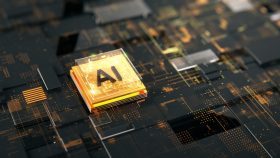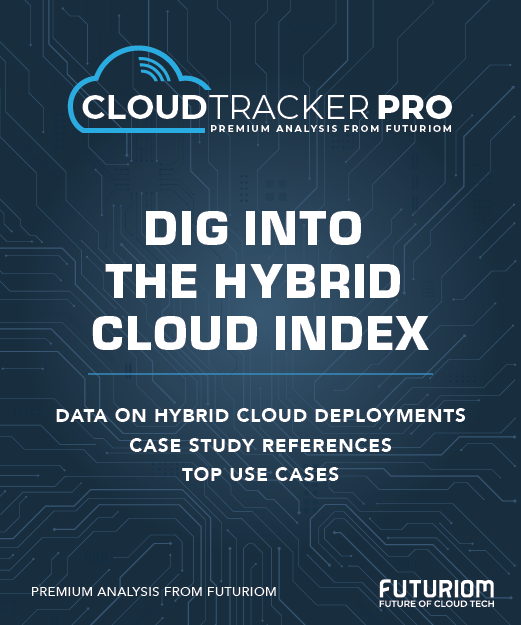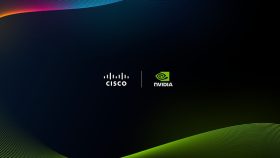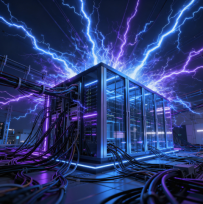AMD's New GPU Could Feed the Neoclouds

Advanced Micro Devices (AMD) unveiled new GPUs at its Advancing AI event last week in Santa Clara that could make it more competitive with rival NVIDIA—next year. And the so-called neocloud service providers could play a role.
The centerpiece of AMD’s announcements was the next generation of its Instinct GPUs, comprising the MI350 and MI355 series chips and associated software. Together, AMD claims the new products offer “a 4x, generation-on-generation AI compute increase and a 35x generational leap in inferencing, paving the way for transformative AI solutions across industries.”
The inferencing leap of 35x could make a big difference in AMD’s prospects against NVIDIA. According to AMD research, the market for inferencing is expected to grow over 80% annually through 2028. And experts have acknowledged that the MI355 in particular competes favorably with NVIDIA’s HGX B200 NVL8 for model inferencing.
AMD also released ROCm 7, an upgraded version of the software toolset for use with its GPUs. A related but separate AMD Developer Cloud, designed for developers and open-source communities, provides what AMD calls “a fully managed environment [providing] instant access to AMD Instinct MI300X GPUs—with zero hardware investment or local setup required.”
The Promise of the MX400
AMD trotted out an impressive lineup of endorsements for the new chips, including ones from Meta, OpenAI (represented onstage by CEO Sam Altman), Oracle, Microsoft, Cohere, Red Hat, Astera Labs, and Marvell.
But a high point of the show was the preview of AMD’s MI400, a rack-scale series of chips due for release in 2026 that could offer the closest competition yet to NVIDIA’s GPUs. The MI400 is anticipated to compete directly with NVIDIA’s Vera Rubin (VR)200 NVL144, also due out in 2026.
Also in 2026, AMD plans to release a “Helios” AI infra rack combining AMD EPYC “Venice” CPUs, Instinct MI400 series GPUs, Pensando “Vulcano” AI NICs, and ROCm software. Further, the rack will support up to 72 MI400 series GPUs with 260 Tb/s of “scale up” bandwidth supporting the Ultra Accelerator Link.
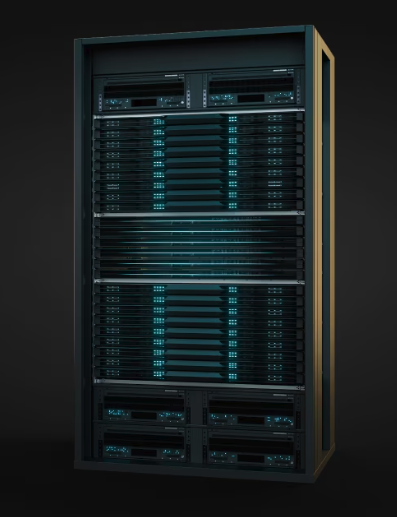
AMD Helios rack. Source: AMD
“I could not be more excited about 2026,” said Tareq Amin, CEO of HUMAIN, the AI company launched by Saudi Arabia’s sovereign wealth fund, who appeared onstage with AMD CEO Lisa Su during her keynote. “I think the MI400 series is a game-changer for our industry.”
“We are extremely excited for the MI450,” said Sam Altman. “The memory architecture is great for inference, we believe it can be an incredible option for training as well…. I think it’s going to be an amazing thing.”
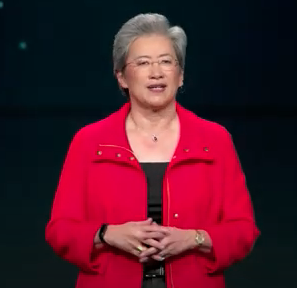
AMD CEO Lisa Su speaking at AMD Advancing AI conference. Source: AMD via YouTube
The Role of the Neoclouds
Meanwhile, AMD is pushing to sell its current chips to the so-called neoclouds, as cloud providers targeting GPU-as-a-service have become known. Examples include CoreWeave and Nebius, which appear to have a large market share.
One reason for AMD’s push is the neoclouds’ reported dissatisfaction with NVIDIA’s DGX Cloud Lepton, a program that offers GPU space on a variety of neocloud platforms and NVIDIA software, based on developers' choice. Some believe this could clip the margins of neocloud businesses, though NVIDIA’s DGX Cloud Lepton ecosystem presently includes CoreWeave, Crusoe, Firmus, Foxconn, GMI Cloud, Lambda, Nebius, Nscale, SoftBank Corp., and Yotta Data Services.
AMD offers a welcome alternative these neoclouds could deploy to avoid relying solely on NVIDIA GPUs. What’s more, analyst firm SemiAnalysis reports that AMD also is considering offering neoclouds a deal whereby if they purchase more GPUs, AMD will rent back space on those accelerators to further its own research. This kind of incentive could bolster AMD sales. Add the MI400 on the horizon, and AMD’s prospects against NVIDIA look better than they’ve ever been.
There are many moving parts to this plan. AMD must meet its release schedule, even as NVIDIA sticks to its aggressive cadence of new technology releases. UALink must be ready for release when AMD needs it, or else AMD will lose some of the advantages of that nonproprietary scale-up architecture.
In a note to clients, equity analyst Blayne Curtis of Jefferies wrote on June 12:
“Our checks suggest that UA Link will likely not be ready for production in 2026 implying this release [of the Helios rack] may end up being pushed out into 2027 as we’ve previously noted.”
Meanwhile, more neoclouds must determine that AMD is a better option than adding more NVIDIA GPUs. We’ll see what 2026 brings.
Futuriom Take: AMD’s new chips offer impressive features, particularly for inferencing. But the real competitive option against NVIDIA will come, hopefully, in 2026. By that time, AMD may have made sufficient inroads with neocloud customers to give NVIDIA a run for its money.


